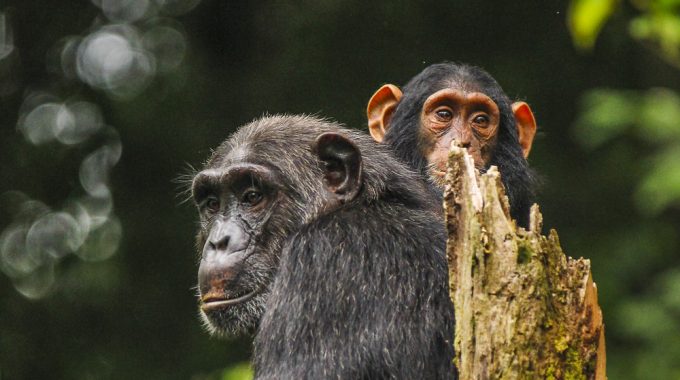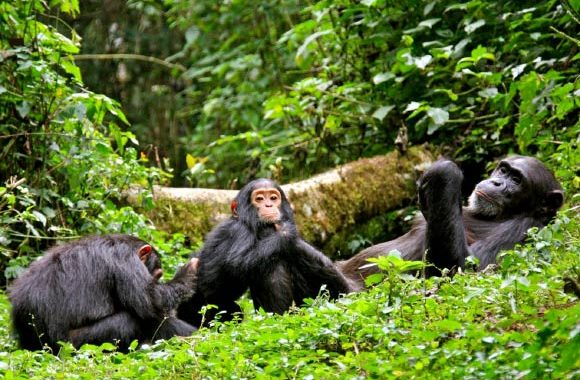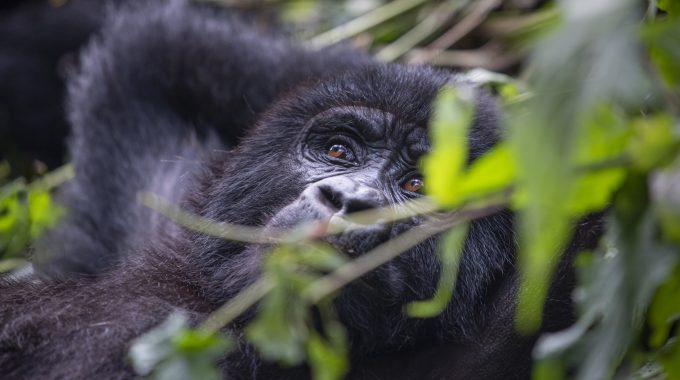Revised Gorilla and Chimpanzee trekking permit prices New prices imposed on Chimpanzee trekking permits as…
What is unique about Kibale National Park?
What is unique about Kibale National Park? Kibale National Park, located in western Uganda, is one of the country’s premier wildlife destinations, offering an unparalleled experience in primate viewing and rich biodiversity. Here’s a more detailed look at what makes Kibale unique:

Chimpanzee trekking safaris: What is unique about Kibale National Park?
-
Prime Habitat for Chimpanzees:
- Chimpanzee Population: Kibale is home to one of the largest populations of chimpanzees in Uganda, with an estimated 1,500 individuals. This makes the park one of the best places in Africa for chimpanzee tracking. The park is known for its high success rates in spotting chimpanzees, and guided treks take visitors deep into the forest to observe these intelligent primates in their natural habitat.
- Chimpanzee Tracking Experience: The chimpanzee tracking in Kibale is an intimate experience where visitors get to watch chimpanzees interact, forage for food, and even play. This offers a rare insight into their complex social behavior, including their vocalizations, tool use, and group dynamics.
-
High Primate Diversity
- 12 Primate Species: Kibale is a haven for primate lovers, boasting 13 different primate species, the highest number found in any park in East Africa. In addition to chimpanzees, the park is home to other fascinating primates, such as:
- Red Colobus Monkey: A rare species known for its vibrant red fur.
- Black-and-white Colobus Monkey: distinguished by its striking black coat and white fringes.
- L’Hoest’s Monkey: A species endemic to the Albertine Rift region.
- Grey-cheeked Mangabey: Another primate species that can be seen in the park.
- Blue Monkeys, Vervet Monkeys, and Olive Baboons are commonly seen, and visitors may spot them in the forest or savanna areas.
- Primate Behavior: Observing the social dynamics of these various primates, such as grooming, play, and communication, is a highlight of a visit to Kibale.
Best Kibale forest travel deals: What is unique about Kibale National Park?
- Rich Biodiversity Beyond Primates
- Birdwatching: Kibale is a birdwatcher’s paradise, home to over 350 bird species, including some rare and endemic ones. Notable species include the African grey parrot, the yellow-spotted nicator, and the Blue-shouldered Robin-chat.
- Mammals: In addition to primates, Kibale is home to other mammalian species, including elephants, buffaloes, bushbucks, and duikers, though these are more elusive and often seen on rare occasions.
- Reptiles and Amphibians: The park’s forested and wetland areas also provide habitats for a variety of reptiles and amphibians, including various snake species, lizards, frogs, and chameleons.
-
Varied and Unique Ecosystems
- Tropical Rainforest: Kibale is primarily a tropical rainforest, with dense vegetation and towering trees that provide a rich environment for a wide range of species. The forest’s thick canopy and understory create a unique atmosphere that allows for a truly immersive wildlife experience.
- Wetlands: The park is also home to several wetlands, such as the Bigodi Wetland Sanctuary, which is part of the park’s ecosystem. These wetlands are excellent for birdwatching and are home to species like the shoebill stork, papyrus gonolek, and various kingfishers.
- Forest Patches and Clearings: The park contains varying forest types, ranging from moist evergreen forests to savannahs and clearings. The diversity of habitats enhances the park’s biodiversity, making it attractive to different species of flora and fauna.
-
Conservation and Scientific Research
- Conservation Efforts: Kibale National Park is an important site for conservation initiatives, particularly in the protection of its primate populations. Uganda Wildlife Authority (UWA) works alongside international organizations and local communities to protect the park’s wildlife from poaching and habitat destruction.
- Research Hub: The park is a key site for primate research. The Kibale Chimpanzee Project, for example, has been running for decades and is one of the longest-running studies of chimpanzee behavior in the world. Researchers study chimpanzee behavior, ecology, and social structures, contributing valuable insights to the scientific community.
-
Scenic and Geographic Beauty
- Rugged Landscapes: Kibale is situated in a mountainous region near the Rwenzori Mountains, providing beautiful scenic views. The combination of forested areas and the backdrop of mountains adds to the park’s allure.
- Bigodi Wetland Sanctuary: This community-managed wetland area is just outside the park and offers additional wildlife viewing opportunities. It is a great place for birdwatching and provides an easy, accessible environment for visitors to enjoy a nature walk.
-
Cultural Interactions
- Community Involvement in Conservation: The communities surrounding Kibale are actively involved in conservation efforts. Visitors can take part in community tours that allow them to learn about local cultures, traditions, and conservation initiatives. These interactions help support sustainable eco-tourism and provide economic benefits to local communities.
- Cultural Experiences: Visitors can visit nearby villages to engage in cultural activities, including performances, local dances, and crafts. The park’s proximity to the Bakiga and Batoro peoples allows tourists to connect with the indigenous cultures that call the area home.
-
Eco-Tourism and Sustainable Tourism
- Responsible Tourism: Kibale National Park has been a leader in eco-tourism and responsible travel practices. Visitors are encouraged to respect wildlife, maintain minimal impact on the environment, and engage in educational experiences. The presence of eco-lodges and sustainable tourism practices ensures that the park’s natural resources are protected for future generations.
- Guided Tours: Expert guides lead the chimpanzee tracking tours and nature walks, sharing their extensive knowledge of the park’s flora and fauna. These guided experiences allow visitors to engage deeply with the environment and ensure that the visit is both educational and memorable.
-
Access and Proximity to Other Attractions
- Strategic Location: Kibale is located near other significant attractions, such as Queen Elizabeth National Park, the Rwenzori Mountains, and the beautiful Lake Bunyonyi. Visitors can easily combine a trip to Kibale with other iconic Ugandan destinations for a more extensive safari experience.
-
Activities and Experiences
- Chimpanzee Tracking: The main activity, with options for full-day and half-day treks as well as chimpanzee habituation experiences where visitors can spend more time with the primates.
- Nature Walks: Explore Kibale’s ecosystems on foot with guided nature walks that highlight the park’s diverse flora and fauna.
- Cave Exploration: Kibale is home to several caves, some of which can be explored with the guidance of local experts, providing insight into the park’s geological history.
Conclusion:
What is unique about Kibale National Park? Kibale National Park is a unique blend of biodiversity, rich ecosystems, and cultural engagement. It is especially renowned for its chimpanzee tracking opportunities, but its primate diversity, vibrant birdlife, and beautiful landscapes make it an exceptional destination for any wildlife enthusiast. Whether for scientific research, eco-tourism, or simply the joy of observing nature, Kibale offers a truly distinctive African wildlife experience.



